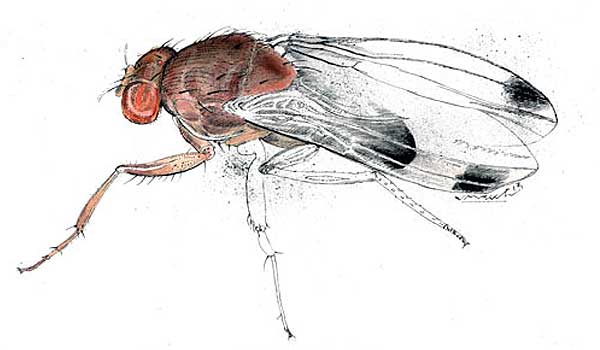
Bait Sprays Viewed as Future SWD Control Option
In the future, blueberry growers may be using bait sprays as a critical part of their spotted wing drosophila control.
According to preliminary research, effective bait sprays applied in the future may be able to significantly reduce overwintering adult populations. The practice can help growers delay the start of their in-season sprays and reduce insect pressure during peak population periods.
In a report at the 2016 Oregon Blueberry Conference, Oregon State University entomologist Vaughn Walton shared findings from his and other research showing the potential benefits of early-season bait sprays.
“In Oregon, we know we have a smaller population (of SWD) making it through the winter,” Walton said. “In my mind and in other scientists minds, very early in the season is an excellent opportunity to use bait sprays to try and minimize that population.
“This will make a dent in our population as the season progresses,” Walton said.
Reducing that early population can be particularly beneficial in helping growers deal with this pest Walton said.
“Chemical sprays target the adult life stage, but larvae continuously emerge as soon as the pesticides wear off,” he said. “This is because the majority of the population are larvae and they emerge virtually continuously during mid-summer. So, what is happening is we are spraying and one week later we’ve got some pupae emerging as adults. You continuously have these adults emerging and you are continuously fighting these battles.
“Early in the season, however, we have a big fraction of the pest in that adult stage,” Walton said. “So the idea was let’s see what we can do to get rid of those adults.”
Theoretically, early-season management could dramatically reduce SWD populations, Walton said, providing season-long benefits.
“Those populations do pick up, but they pick up a lot slower, so, in essence, you would be saving some pesticides during the early part of the season,” he said.
Bait sprays, as yet not available in blueberries, are applied in non-fruiting zones so as to avoid any of the compound getting on fruit, he said.
“What happens is instead of flies being attracted to these fruit and laying their eggs in the fruit, they are attracted to the bait; they feed on it; and, in theory, you will get less eggs laid in the fruit.”
Tests have shown SWD populations were significantly lower in plots directly adjacent to plots with bait sprays, Walton said.
Formulations that have been tested are “relatively rainfast,” Walton said.
In addition to potentially improving control of SWD, use of bait sprays can help reduce pesticide use, providing better habitat for beneficial insects and reducing chances of secondary pest flare ups, he said. |
